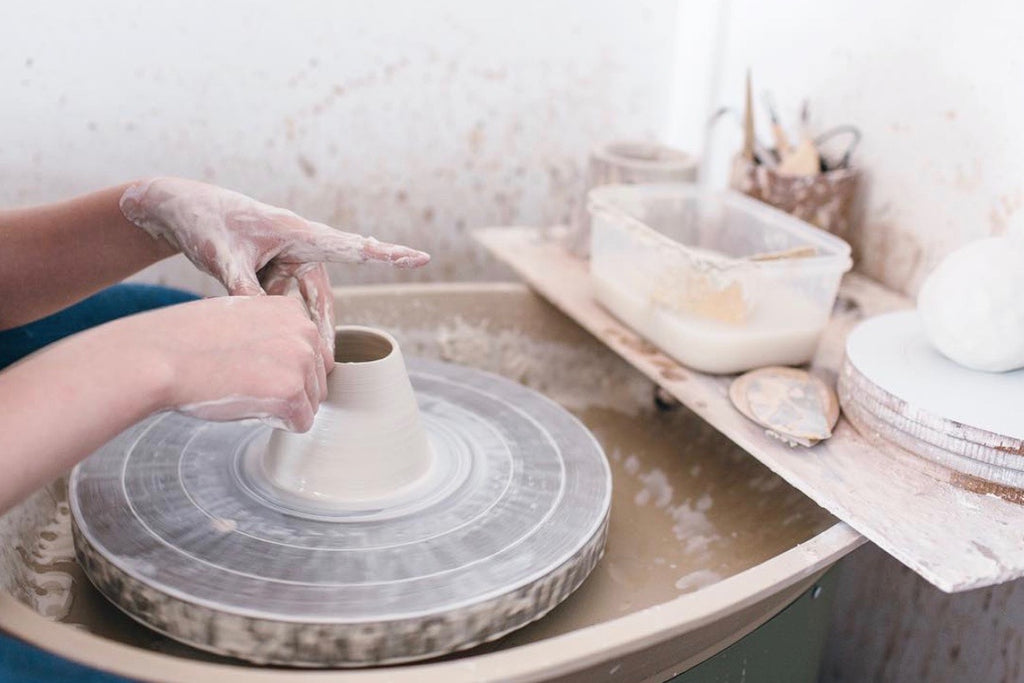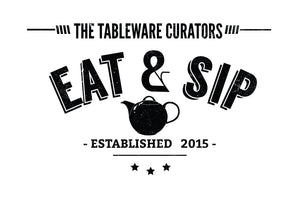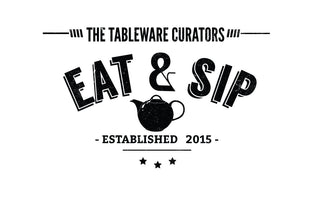
Hand building remains the general basis of pottery making and is definitely the easiest and most fun method to learn (if you haven't read our part 1 on hand building, click here). But there are two other main methods for pottery making - the famed wheel-throwing and slipcast.
Wheel Throwing
Wheel throwing is probably the only method that needs no introduction as it's the first thing that usually comes to mind when you mention pottery. It typically involves shaping clay on an electric or manual 'wheel'. The wheel’s centrifugal force allows potters to create vessels with precision and quality, allowing for a more refined and thinner vessels than the other hand building techniques.
 My attempt at a wheel-throwing course. A 'not-so-refined' vessel - not something I'm proud of, but we did end up using these vessels in the studio.
My attempt at a wheel-throwing course. A 'not-so-refined' vessel - not something I'm proud of, but we did end up using these vessels in the studio.
 The making stages of a juicer by Dot & Co.
The making stages of a juicer by Dot & Co.
 Nobuhito Nishigiwara's mugs before and after trimming
Nobuhito Nishigiwara's mugs before and after trimming

Depending on the preferences of the maker, a footing is sometimes added to the bottom of the ceramic piece while trimming. This can be for aesthetic purposes, as it enhances the overall shape of the piece, or functional purposes - to prevent the glaze from sticking to the kiln during firing.
 Omelettress Studio's bowls given a visual lift after footings are added to the bowls
Omelettress Studio's bowls given a visual lift after footings are added to the bowls
 Here, London potter Florian Gadsby is throwing yunomi teacups off the hump, and the second picture shows his cups waiting to be bone dry.
Here, London potter Florian Gadsby is throwing yunomi teacups off the hump, and the second picture shows his cups waiting to be bone dry.
To read more on the wheel throwing process, Florian Gadsby usually writes very detailed captions for his Instagram photos, documenting his making and thought-process.
Slip cast
For the last pottery method, liquid clay, also know as slip, is poured into a mould to take its shape. The excess slip will then be poured out - the longer you leave it in, the thicker the wall of your product would be. It can be a simple one-part mould, or a few-parts mould depending on the complexity of the shape.
 Dima and Nadya Gurevich are removing the 'Cute boy' mug and 'Helping hand' from their mould
Dima and Nadya Gurevich are removing the 'Cute boy' mug and 'Helping hand' from their mould
Slip casting has its obvious advantages. First, using a mould allows you to cast any shape you like easily. Despite the perception of some that slip casting = cheating/not handmade as it's deemed as a technique of mass-production, this method has generated many unique forms and ideas to develop which may not have been possible with the conventional hand building or wheel throwing.
 Slip casted vessels by Bomi Lee
Slip casted vessels by Bomi Lee
Second, slip casting also allows you to cast shapes with thinner walls as compared to the other methods and it gives the potter a smoother surface as well.
 When they're semi-dry, Bomi cuts them and joins it up.
When they're semi-dry, Bomi cuts them and joins it up.
 The slip casting method has also allowed her to explore having inlaid porcelain strips in her pieces
The slip casting method has also allowed her to explore having inlaid porcelain strips in her pieces

 Eliana Bernard swirls the surface of the slip by hand to create a different kind of marbled effect.
Eliana Bernard swirls the surface of the slip by hand to create a different kind of marbled effect.
---
So there you have it - hand building, wheel-throwing and slip-casting creates the different forms and shapes of the tableware that you see. Of course, potters have their own preferences and some even use a blend of the methods.
Disclaimer: There are other pottery shaping methods that weren't covered in our two-part article such as the newer 3D printing process and other mass produced methods.



Leave a comment